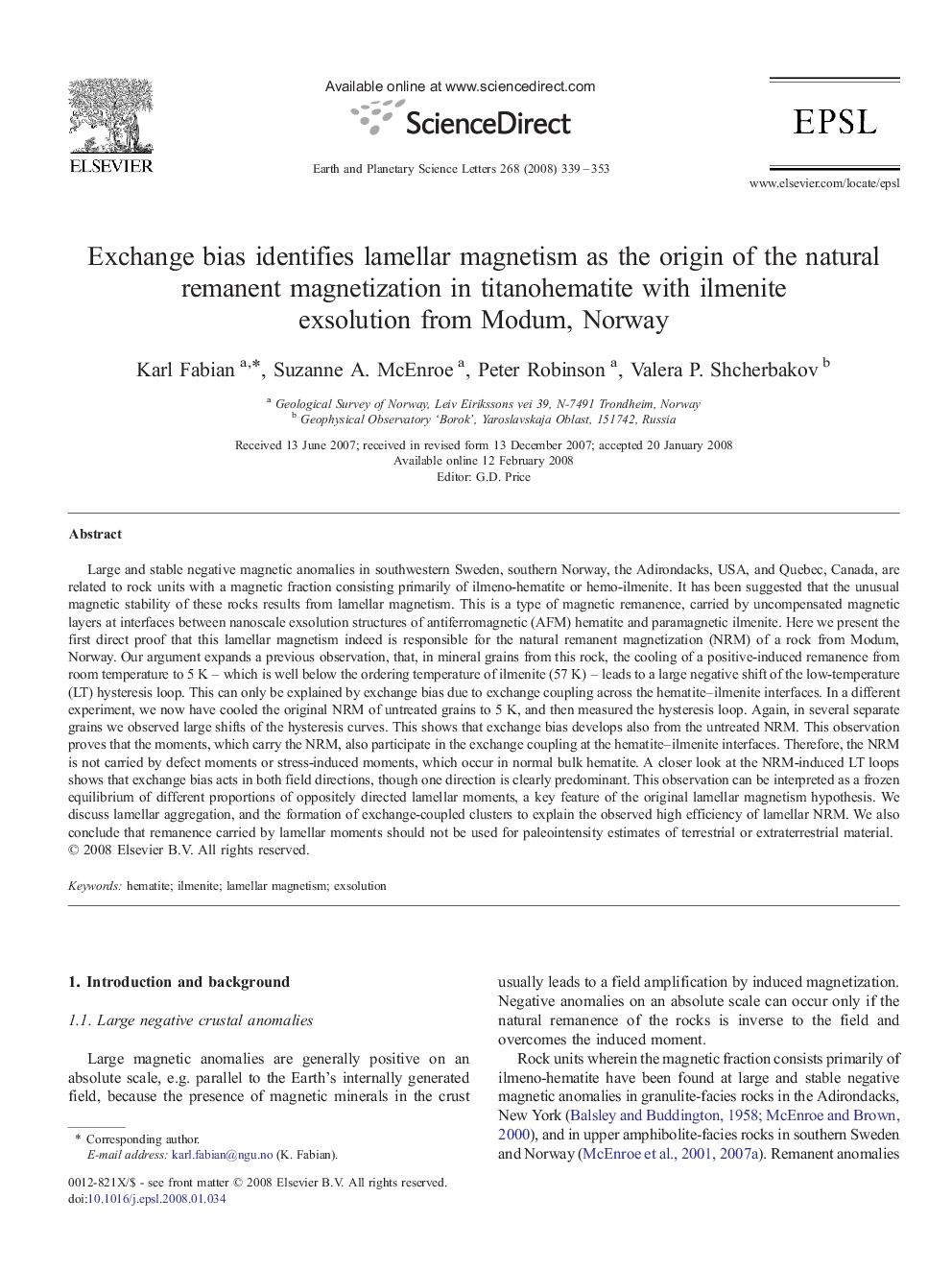| کد مقاله | کد نشریه | سال انتشار | مقاله انگلیسی | نسخه تمام متن |
|---|---|---|---|---|
| 4679815 | 1634898 | 2008 | 15 صفحه PDF | دانلود رایگان |

Large and stable negative magnetic anomalies in southwestern Sweden, southern Norway, the Adirondacks, USA, and Quebec, Canada, are related to rock units with a magnetic fraction consisting primarily of ilmeno-hematite or hemo-ilmenite. It has been suggested that the unusual magnetic stability of these rocks results from lamellar magnetism. This is a type of magnetic remanence, carried by uncompensated magnetic layers at interfaces between nanoscale exsolution structures of antiferromagnetic (AFM) hematite and paramagnetic ilmenite. Here we present the first direct proof that this lamellar magnetism indeed is responsible for the natural remanent magnetization (NRM) of a rock from Modum, Norway. Our argument expands a previous observation, that, in mineral grains from this rock, the cooling of a positive-induced remanence from room temperature to 5 K – which is well below the ordering temperature of ilmenite (57 K) – leads to a large negative shift of the low-temperature (LT) hysteresis loop. This can only be explained by exchange bias due to exchange coupling across the hematite–ilmenite interfaces. In a different experiment, we now have cooled the original NRM of untreated grains to 5 K, and then measured the hysteresis loop. Again, in several separate grains we observed large shifts of the hysteresis curves. This shows that exchange bias develops also from the untreated NRM. This observation proves that the moments, which carry the NRM, also participate in the exchange coupling at the hematite–ilmenite interfaces. Therefore, the NRM is not carried by defect moments or stress-induced moments, which occur in normal bulk hematite. A closer look at the NRM-induced LT loops shows that exchange bias acts in both field directions, though one direction is clearly predominant. This observation can be interpreted as a frozen equilibrium of different proportions of oppositely directed lamellar moments, a key feature of the original lamellar magnetism hypothesis. We discuss lamellar aggregation, and the formation of exchange-coupled clusters to explain the observed high efficiency of lamellar NRM. We also conclude that remanence carried by lamellar moments should not be used for paleointensity estimates of terrestrial or extraterrestrial material.
Journal: Earth and Planetary Science Letters - Volume 268, Issues 3–4, 30 April 2008, Pages 339–353